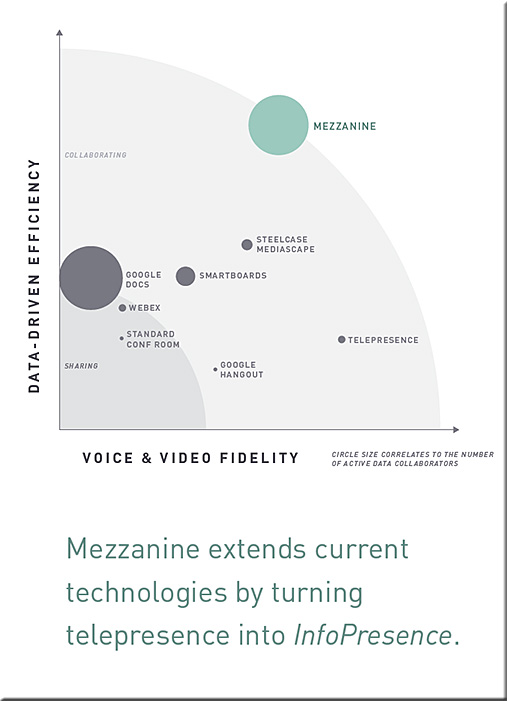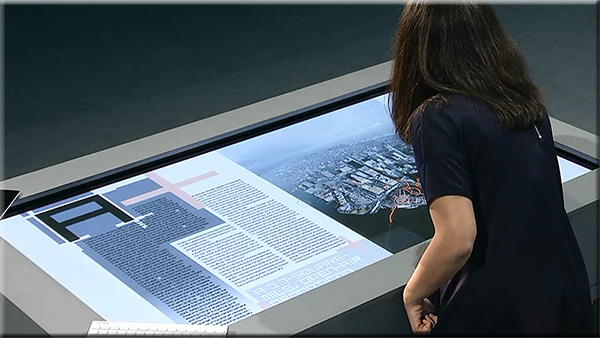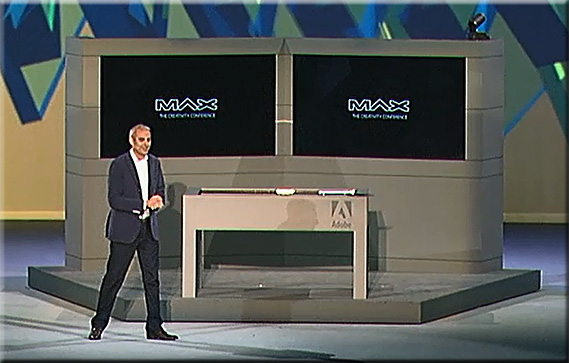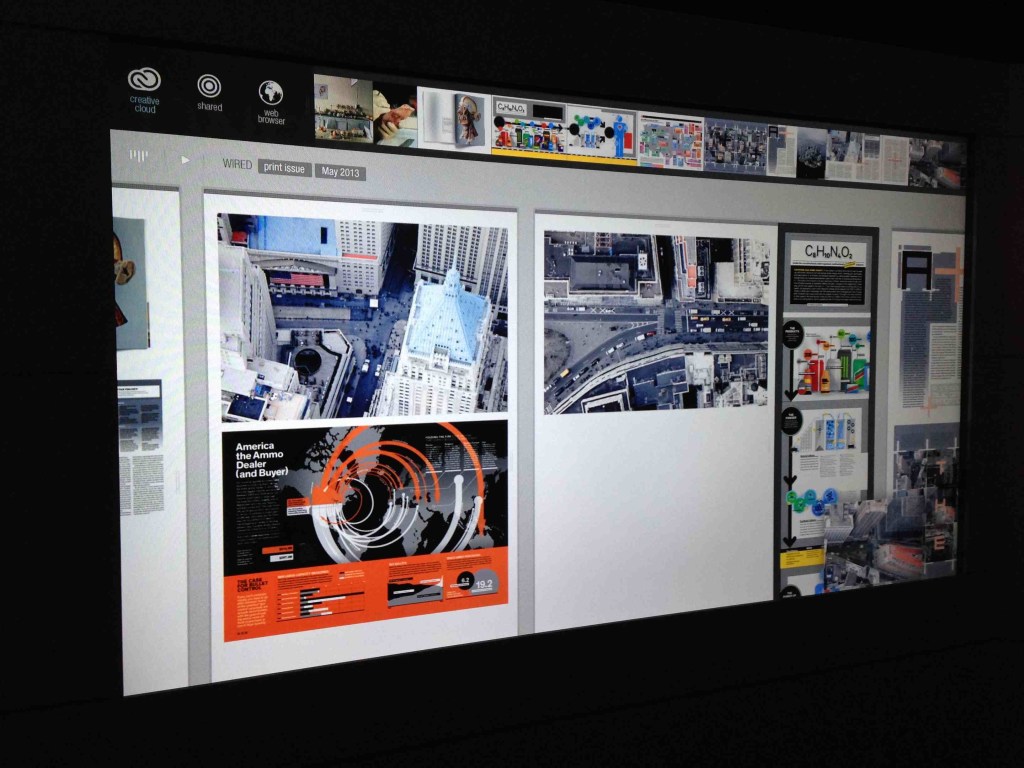Learning in ‘the Living [Class] Room’
From campustechnology.com by Mary Grush and Daniel Christian
Convergent technologies have the ability to support streams of low-cost, personalized content, both at home and in college.




Learning in ‘the Living [Class] Room’
From campustechnology.com by Mary Grush and Daniel Christian
Convergent technologies have the ability to support streams of low-cost, personalized content, both at home and in college.

“The main obstacle to an Apple television set has been content. It has mostly failed to convince cable companies to make their programming available through an Apple device. And cable companies have sought to prevent individual networks from signing distribution deals with Apple.”
— Apple, closer to its vision for a TV set, wants
ESPN, HBO, Viacom, and others to come along
qz.com by Seward, Chon, & Delaney, 8/22/13
From DSC:
I wonder if this is because of the type of content that Apple is asking for. Instead of entertainment-oriented content, what if the content were more focused on engaging, interactive, learning materials? More on educational streams of content (whether we — as individuals — create and contribute that content or whether businesses do)?
Also see:
Excerpt (emphasis DSC):
The communications landscape has historically taken the form of a tumultuous ocean of opportunities. Like rolling waves on a shore, these opportunities are often strong and powerful – yet ebb and flow with time.
Get ready, because the next great wave is upon us. And, like a tropical storm, it is likely to change the landscape around us.
As detailed by analyst Chetan Sharma, this particular wave is the one created by the popularity of over-the-top (OTT) solutions – apps that allow access to entertainment, communication and collaboration over the Internet from smartphones, tablets and laptops, rather than traditional telecommunications methods. Sharma has coined this the mobile “fourth wave” – the first three being voice, messaging (SMS) and data access, respectively – and it is rapidly washing over us.
Addendum on 11/25:

Description:
The Yearbook is a unique publication produced annually by the Center for Digital Education (CDE) that highlights some of the outstanding trends,
people and events over the past year in education technology. The first part of the Yearbook gives readers market awareness by outlining how much money schools spent on education technology, where the funding came from and what technologies have been garnering the most attention.
The second part features 40 education innovators who are using technology to inspire their students, improve learning and better the K-20 education system. We hope that this 2013 Yearbook issue provides inspiration to our readers to continue on their quests towards innovation in education.
From DSC:
My quote in the Center for Digital Education’s 2013 Yearbook reads:
“Educational technologists need to be bold, visionary and creative. They need to be in tune with the needs, missions and visions of their organizations. We have the opportunity — and responsibility — to make lasting and significant contributions within our fields and for the organizations that we work for.”
Learning from the Living [Class] Room — from Campus Technology by Daniel Christian and Mary Grush; with a huge thanks also going out to Mr. Steven Niedzielski (@Marketing4pt0) and to Mr. Sam Beckett (@SamJohnBeck) for their assistance and some of the graphics used in making these videos.
From DSC:
These 4 short videos explain what I’m trying to relay with a vision I’m entitling, Learning from the Living [Class] Room. I’ve been pulse checking a variety of areas for years now, and the pieces of this vision continue to come into fruition. This is what I see Massive Open Online Courses (MOOCs) morphing into (though there may be other directions/offshoots that they go in as well).
After watching these videos, I think you will see why I think we must move to a team–based approach.
(It looks like the production folks for Campus Technology had to scale things way back in terms of video quality to insure an overall better performance for the digitally-based magazine.)
To watch these videos in a higher resolution, please use these links:
Alternatively, these videos can be found at:
.
Tidebreak Next Generation Mobile App Powers Full-Participation Learning — from digitaljournal.com
Excerpts (emphasis DSC):
Mountain View and Anaheim, CA (PRWEB) October 15, 2013
New web app increases collaboration between students and faculty in classroom in BYOD learning environments.
…
The mobile web app from Tidebreak has many new features that will help increase student participation in the classroom. New features that have been incorporated into ClassSpot, ClassSpot PBL and TeamSpot include:
True personalization is the next big thing in multiscreen TV — from .v-net.tv by John Moulding

From DSC:
Not a far stretch to see some applications of this in the future aimed at learning objects/learning agents/and personalized streams of content.
![The Living [Class] Room -- by Daniel Christian -- July 2012 -- a second device used in conjunction with a Smart/Connected TV](http://danielschristian.com/learning-ecosystems/wp-content/uploads/2012/07/The-Living-Class-Room-Daniel-S-Christian-July-2012.jpg)
Addendum:
(With thanks going out to Mr. Richard Byrne over at the Free Technology for Teachers blog for this item)
ChemDraw ~ Favorite Things Series — from collegiatecareercoach.com by Mignon Brooks
Excerpt:
Also see:
From DSC:
I couldn’t locate the relevant information for Flick-to-Share (or did they mean Flick and Share?); however, the idea of swiping to easily and efficiently share files most assuredly is part of the future Smart Classroom. see:
.
Also see:
Wearable tech at the workplace — from connectedworldmag.com
Excerpt:
Wearable sensors are the latest tech-related fashion craze, but not just for consumers. Businesses could soon make use of sensors affixed to hats, watches, glasses, and more. Equipped to provide workers with much-need data about the surrounding environment, these devices may soon invade the job and redefine the workplace—much like tablets and smartphones did just a few years back.
Naturally, businesses have been discussing how something like Google Glass could be used at work. Even the BYOD (bring your own device) phenomenon has the potential to extend to wearable technology, with workers bringing their personal smart watches and glasses for use at work. However, the potential for wearable sensors could be much greater, with specific applications created for targeted industries.
From DSC:
Some serious potential for mobile/distance learning here. What if, instead of a surgeon, that person was an archaeologist on a dig speaking to students in their living rooms, on mobile devices, and/or in classrooms somewhere else…? An electrician fixing a broken transformer on the electrical grid and talking through what she is fixing…? The possibilities are numerous.
See Andrew Vanden Heuvel’s work on this as well:
Moving back to the surgery…one last thought/idea here:
iPad still dominates in latest tablet web usage numbers — from ipadinsight.com by Patrick Jordan
From DSC:
This is especially important data given the ever increasing trend towards mobility as well as when you are considering which ecosystem(s) to build up and around (i.e. consider things such as BYOD, what apps and platforms your students are going to develop for, digital textbooks, smartphone/tablet-based “clickers,” etc.)
Here’s why the TV apps economy will be a $14 billion business — from forbes.com by Michael Wolf
.
Excerpt:
According to new research published this week, the TV apps economy is forecasted to reach $14 billion by 2017.
…
Take for example today’s news that Apple will begin selling video advertisements served by iAd through iTunes Radio loaded on Apple TVs. This is only the first move for Apple in this space, and others like Samsung and Google are already investing heavily in connected TV app advertising.
From DSC:
Why post this? Because:
.
![The Living [Class] Room -- by Daniel Christian -- July 2012 -- a second device used in conjunction with a Smart/Connected TV](http://danielschristian.com/learning-ecosystems/wp-content/uploads/2012/07/The-Living-Class-Room-Daniel-S-Christian-July-2012.jpg)
From DSC:
And if this does take off,
$14 billion won’t begin to capture the profits from this new industry.
It will be far larger than that.
Relevant addendum on 6/27/13:
Via: [The Verge] Image Credits: [Venture Beat] [Home Theater]
From DSC:
Well…how about using one of these devices in order to do so!
New video collaboration robot: TelePresence gets moving — from cisco.com by Dave Evans
Excerpt:
That is why Cisco’s new joint effort with iRobot—demonstrated publicly this week for the first time—is so exciting: We’ve created a mobile Cisco TelePresence unit that brings collaboration to you—or, conversely, brings you to wherever you need to collaborate. Called iRobot Ava 500, this high-definition video collaboration robot combines Cisco TelePresence with iRobot’s mobility and self-navigation capabilities, enabling freedom of movement and spontaneous interactions with people thousands of miles away.
.
iRobot Ava™ 500 Video Collaboration Robot — published on Jun 10, 2013
iRobot and Cisco have teamed to bring the Ava 500 video collaboration robot to market. The robot blends iRobot’s autonomous navigation with Cisco’s TelePresence to enable people working off-site to participate in meetings and presentations where movement and location spontaneity are important. The new robot is also designed to enable mobile visual access to manufacturing facilities, laboratories, customer experience centers and other remote facilities.
.
From Attack of the Telepresence Robots! — from BYTE by Rick Lehrbaum
.
 |
 |
 |
 |
| MantaroBot “TeleMe” | VGo Communications “VGo” | Anybots “QB” | Suitable Technologies “Beam” |
.
Also see:
.

.
.
From the Oblong.com website:
Mezzanine™ is a collaborative conference room solution that introduces multi-user, multi-screen, multi-device collaboration. This is next-generation communication: share any content from any device with anyone, anywhere.
Mezzanine transforms creative teamwork, executive meetings, and sales presentations into real-time, collaborative work sessions. Mezzanine expands on existing telepresence technology by providing what we call InfoPresence™—the incorporation of multiple users, multiple devices, and multiple streams of information in the collaboration environment. The future of conference room collaboration is here.
A Mezzanine workspace lets any person on a network bring their own device and share content and applications with any colleague, anywhere in the world, interactively. Mezzanine is a collaborative conference room solution combining presentation design and delivery, application sharing, whiteboard capture, and video conferencing, all within a framework of multi-participant control.
.
Also see:
Part 3: Transmedia is a mindset, not a science — from by Matt Doherty — thanks to the Scoop from siobhan-o-flynn at Tracking Transmedia
The end of TV as we know it & the rise of transmedia
.
.
Also see:
The end of TV as we know it & the birth of transmedia — slideshare by Ogilvy & Mather
Doug Scott, President, OgilvyEntertainment and Matt Doherty, Transmedia Architect, Ogilvy & Mather Worldwide presented The End of TV as We Know It & The Birth of Transmedia at the 21st Century Storytelling Conference: Content, Context and Conversations sponsored by Microsoft, Ogilvy & BrainJuicer on July 31, 2012 in Chicago.
Throughout history, we have told stories. Stories are what connect us across geographies, cultures and experiences; stories demonstrate that we share the same hope, dreams, fears, challenges and desires. Today’s complex, digtally connected consumer universe makes brand storytelling more challenging, but also creates opportunities for brands to tell their stories in new ways.
Doug Scott and Matt Doherty discussed how the idea of TV might be a thing of the past, but the stories that drive our content will always be our constant. Our variable? Telling. Telling has evolved due to the primary role of digital in our lives and disruptive innovation which has given us the ability to craft transmedia experiences. Transmedia has brought about a new set of creative tools and narratives that are rooted in content, formed by context and crossed by all things culture. Are you a story? Or are you a teller?
IT does not love iPads — from by Michelle Fredette
Students and faculty may love them, but IT personnel get a major headache when they try to integrate Apple tablets–and the company’s TV technology–in an enterprise setting.
.
From DSC:
The Bring Your Own Device (BYOD) train has arrived. As such, this is a huge issue and as you can tell from reading Michelle’s article, there is no silver bullet out there (at least not as of 5/9/13). I sure wish all of the relevant vendors could get behind a secure, efficient, reliable standard here…or at least have Apple come up with something that would get past the multi-cast issues for wireless networks (i.e. what works great for the consumer at home doesn’t work well on a campus or throughout an enterprise). It also adds to the already difficult job we in IT have when the targets are constantly moving — and moving faster than ever. Add to that the need to consider entire ecosystems/platforms these days.
From DSC: re: Adobe’s Project Context:
This is the type of hardware/software combination that I’ve been hoping for and envisioning! Excellent!
It appears to be the type of setup whereby students could quickly and easily collaborate with one another — in a face-to-face setting (and ideally in remote locations as well) — by not just displaying files but also being able to share files with one another. Files can be sent up to the interactive, multi-touch displays as well as to an interactive table. So it’s not just displaying files, but actually sharing files and being able to collaboratively work on a project.
Eventually, I see this being able to be done in your living room. What if MOOCs could integrate this type of web-based collaboration into their projects?
But for now, this is a HUGE step forward in this vision. Great work Adobe! This is innovative! Very helpful!
Example screenshots:
.
.
.

..
Also see:
.



